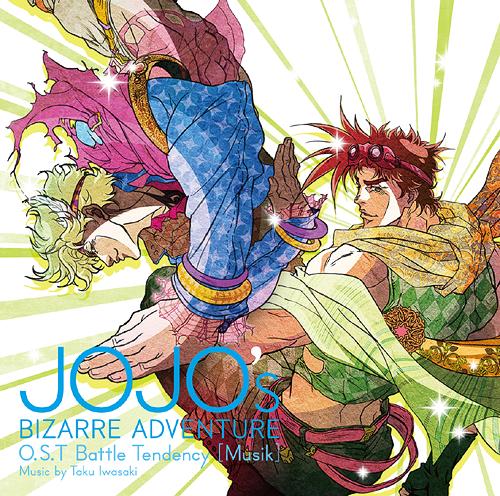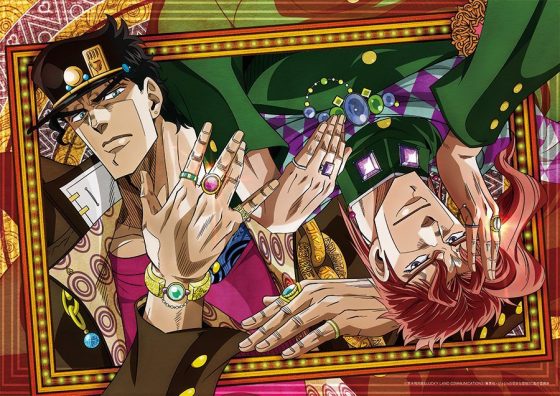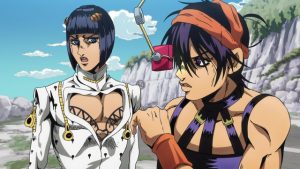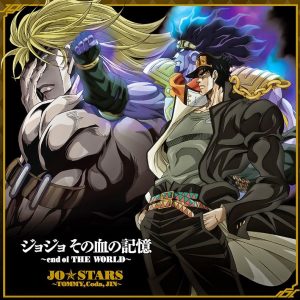
Outside of the niche yaoi and yuri genres, the LGBT community doesn’t have much in the way of positive representation in anime. For every good character like Utena or Yuri Katsuki, there are dozens of stereotypical creepy flaming gay men or touchy-feely women. Can’t there be an anime where queer characters just exist and can kick as much ass as anyone else without their sexuality defining them?
Enter Hirohiko Araki and his magnum opus, JoJo’s Bizarre Adventure. His characters wear crop tops, strike fabulous poses, and have deep, meaningful relationships with comrades of the same sex. Very few of them have been confirmed as LGBT (Dio’s bisexuality being the most notable example), but many other characters are implied to be queer through their personalities and behaviors. But are Joseph, Giorno, Johnny, and other questionably heterosexual heroes actually gay? We’ll never know for sure unless Araki tells us, but let’s take a look at all eight parts individually to see which characters seem the most canonically queer and which ones are probably gay only in the headcanons of dedicated fujoshi.
Part 1 – Phantom Blood
Compared to later JoJo parts, this macho melodrama seems like the straightest of all of them. But if you look at it in its context as a shounen manga in the late 1980s—a time when Fist of the North Star and American action heroes reigned supreme—Phantom Blood’s more emotional moments stand out as brave deviations from the testosterone-fueled norm.
None of the characters clearly read as LGBT (Dio’s irresistible sensuality and hate-crush on Jonathan shows up more in Stardust Crusaders), but we still love tender scenes like Speedwagon’s bittersweet realization that Erina is a better caretaker for his beloved Jonathan, as well as Jonathan tearfully cradling Dio’s head in his arms at the very end. These are strong ‘80s manga heroes who aren’t afraid to show their love for the people closest to their hearts.
Verdict
Jonathan – most likely straight
Dio – confirmed as bisexual by Araki later, but doesn’t show much of it here
Speedwagon – possibly gay or bisexual, especially since he stayed a bachelor to the end
Part 2 – Battle Tendency
Before the Gucci grandeur that is Golden Wind, Battle Tendency was by far the gayest JoJo part in terms of its aesthetics and character interactions. Our new hero Joseph is a flamboyant trickster with a penchant for cross-dressing, his buddy Caesar is a classic tsundere, and the main villains are musclebound Aztec vampires whose skimpy attire would make a stripper blush. Just compare Phantom Blood’s intense anime opening “Sono Chi no Sadame” to Battle Tendency’s fabulously colorful “Bloody Stream” to see the difference.
Both Joseph and Caesar clearly like girls, but their relationship with each other is more developed and emotional than anything else these characters ever do. Caesar learns to see Joseph’s pure heart underneath his antics, and Messina more or less confirms Caesar’s crush with the line, “You’re terrible at making friends, but once you find one, you fall harder than you do with girls.” Joseph doesn’t reciprocate quite as obviously, but his complete breakdown after Caesar’s death and burning desire to avenge him show that this man was one of the most important people in his life.
Verdict
Joseph – possibly bisexual
Caesar – pretty much confirmed to be bisexual
Pillar Men – the world may never know
Part 3 – Stardust Crusaders
Stardust Crusaders focuses much more on creating a grand adventure than on developing complex relationships between its characters, so almost all of the sexual energy in Part 3 comes from our favorite vampiric body-snatcher, Dio. He decorates Jonathan’s precious stolen body with suggestive outfits and sways people to his side through devilish seduction. His powerful charisma works especially well on the only other character with significant gay implications, Kakyoin.
Kakyoin was born with his Stand, but felt isolated from his peers because none of them could see this unique part of him. But when Dio appeared before him, surrounded by roses and hovering close to his ear, Kakyoin was easily taken in. This doesn’t necessarily mean that Kakyoin is a closeted homosexual, but his backstory certainly follows a similar narrative. Jotaro, on the other hand, barely shows any sexual interest at all except for having an ex-wife in Part 6. You can thank CLAMP’s infamous doujin comics for the proliferation of Jotaro/Kakyoin works in the fandom, since the actual manga doesn’t explore their relationship very far.
Verdict
Jotaro – most likely straight because of his wife and child, but could be asexual
Kakyoin – possibly gay, since his backstory echoes that of a closeted gay kid
Dio – has fully embraced his flamboyance at this point
Part 4 – Diamond is Unbreakable
Josuke is clearly Joseph’s son—he’s a mischief-maker with a heart of gold who isn’t afraid of indulging his somewhat feminine interests. If any JoJo protagonist were to be confirmed as gay, we wouldn’t be surprised if it was this fashion-loving delinquent. The subtext comes less from his relationships with other characters and more from his personality, such as his obsession with flashy designer clothes, agreeing with Yukako that Koichi is cute when he smiles, and his admission that he’s a “pure love kind of guy”. He also says that his mind tends to wander when ball-shaped things are involved...
Since he doesn’t have a clear “love interest” like Joseph had with Caesar, Josuke tends to get paired with either Okuyasu or Rohan in fanfiction. Neither pairing has much evidence in the actual canon, but fan writers can spin Josuke’s touchy-feely friendship with Okuyasu and love-hate rivalry with Rohan into romantic relationships without changing anything from the source material. It’s ambiguous, but in a good way.
Verdict
Josuke – possibly some degree of queer, could easily have a bromance with Okuyasu or a mutual hate crush on Rohan
Final Thoughts

This isn’t even touching on the treasure trove of chapter/volume covers that dress characters in even crazier outfits and arrange them in extremely suggestive poses—Joseph and Caesar are practically kissing in one of them. They aren’t exactly canon, but they’re certainly entertaining!
Join us in the second half of this series as we explore the queer subtext in JoJo’s Bizarre Adventure: Golden Wind to Jojolion. In the meantime, what did you think of our analysis? Have you noticed gay subtext in any of the JoJo parts? Let us know in the comments, and thanks so much for reading!





